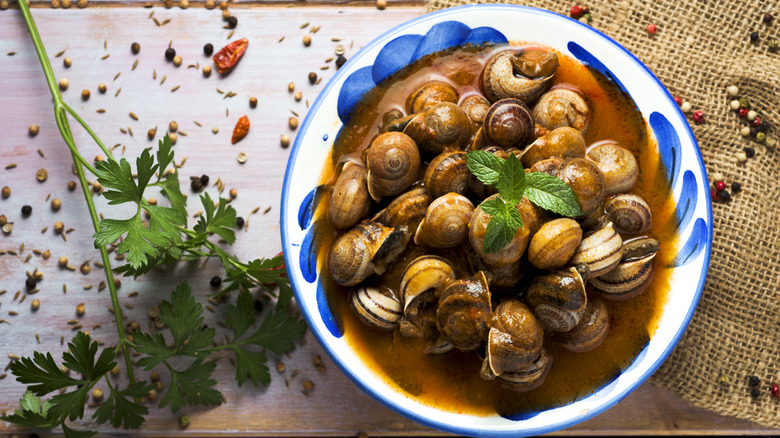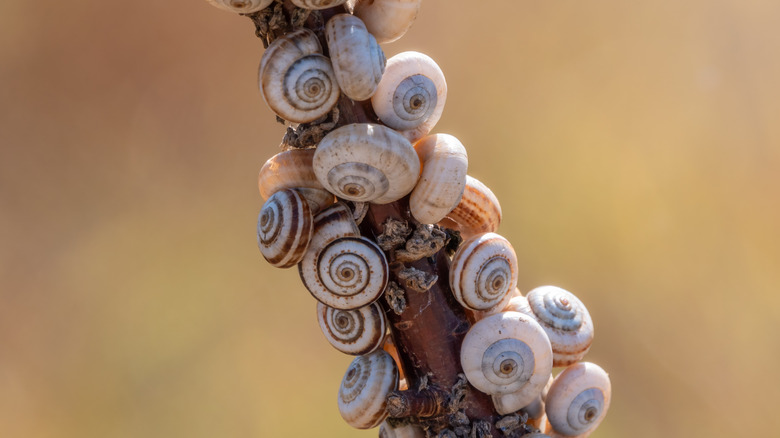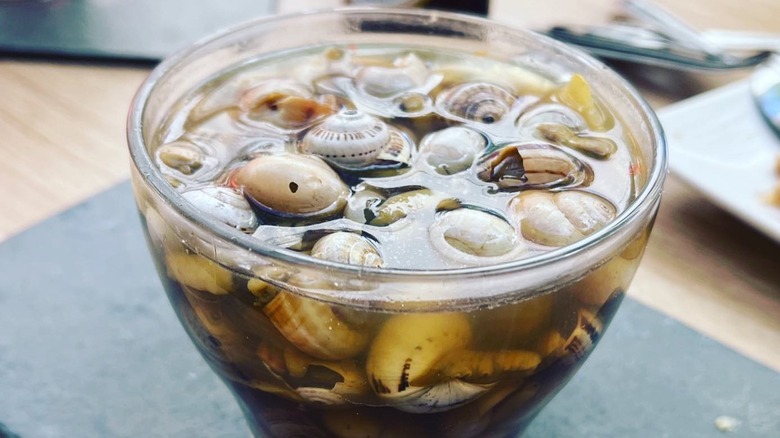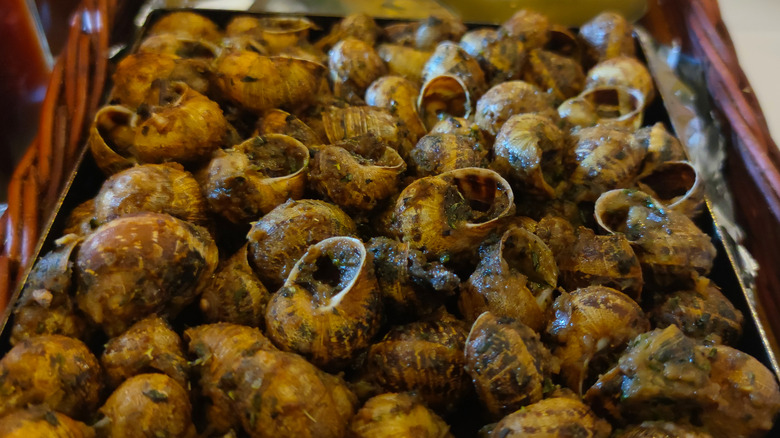How Spanish Cuisine Revamps A Common Pest Into A Seasonal Delicacy
Anyone who gardens knows that snails are an unwelcome pest. Though they are small and slow, they have an appetite. Snails can do quite a bit of damage to gardens and lawns, devouring grasses, herbs, flowers, and vegetables. While instinct may say "kill and discard", there are other ways of dealing with these common garden pests. Over in Spain, for instance, snails are considered a culinary delicacy.
Consuming snails for food has been a common practice in Western Europe for thousands of years. Though France tends to be the country most associated with eating snails (escargot), Spain has an equally iconic and intensely flavorful version. Called caracoles, there is a very limited window during which the snails are available.
In Spain, caracole season is looked forward to with a buzz of excitement and anticipation for when the chalk board outside the tapas bar will finally read that this delicacy is in. If that doesn't provide you with some kind of idea as to why Spaniards get so pumped up about eating these little snails, perhaps a dip into Spanish history will.
30,000 years of snail eating
Long before France turned escargot into an international dish of renown, Spanish snail-eating culture was already a well-established tradition. In 2014, a team of archaeologists discovered remains of a hearth and meal dating back 30,000 years. Upon examination, it was determined that the cooked food was snails, making pre-historic Spain the first country in Europe to have eaten snails in this manner.
Caracoles season is very short, running just shy of two months between May and June. In Catalunya, the season is kicked off with an annual Snail Festival held on the last Sunday in April. Farther South, in the Mediterranean province of Andalusia, there is not a tapas bar or market devoid of caracoles. The city of Seville, in particular, is a great place for traditional boiled caracoles and washing them down with a cold beer.
Caracoles can be incorporated into meals in a number of different ways. More often than not, however, they are served on their own, swimming in a pungent, spicy sauce. It's not clear when exactly this specific recipe for caracoles began, but it's likely that it developed over the centuries as Spain's love of eating snails continued to grow.
Traditional tapa de caracoles
The traditional and favored Andalusian way to cook caracoles is by making tapa de caracoles. As the name implies, this is a tapas, which many of us know is a collection of small plates often served, often for little to no cost, alongside a purchased alcoholic beverage. Tapa de caracoles is served in a bowl of cooking broth, which comes in two flavorful choices.
The first is decidedly spicy, composed of citrus rind, cayenne pepper, and onions. The snails are boiled until they become soft and tender and are removed from their shells either by slurping or with a toothpick. The second, more mild broth is a concoction of garlic, cumin, bay leaves, and black pepper.
Best shared with friends, you truly needn't be squeamish about eating these snails. If you're familiar with mussels, their taste is pretty similar once cooked. It's a briny flavor, all the more improved with the spices from either of the two broths.
Other variations of caracoles
There are a few other variations of caracoles that are worth noting, such as cabrillas en tomate. Cabrillas snails are larger than caracoles and get cooked in a thick sauce of tomatoes, garlic, sobrasada sausage, and other aromatic herbs.
Caracoles can come with rice (arroz con caracoles), rabbit (conejo con caracoles), or served on a sizzling metal tray as they do in the snail-loving region of Catalunya. The dish is known simply as caracoles a la llauna. The snails are assembled live on a heavy metal tray and seasoned liberally with olive oil and salt. The tray is then placed on a grill, and the snails are cooked over hot coals for about 20 minutes, all the while being seasoned throughout the process. The dish is finished with a flambé of brandy and served bubbling hot with a side of garlic aioli.
It may seem strange to turn around and eat the pests that have been attacking your cabbages, but there are plenty of reasons to give caracoles a try. There is no better way to understand the cuisine of another country than to eat as the locals do. So, if you find yourself in Spain between May and June, set aside any reservations you have and enjoy a bowl of caracoles — you might just surprise yourself.



